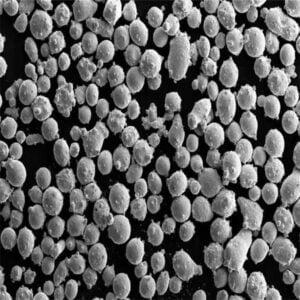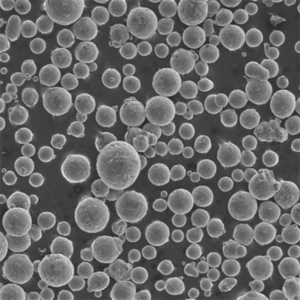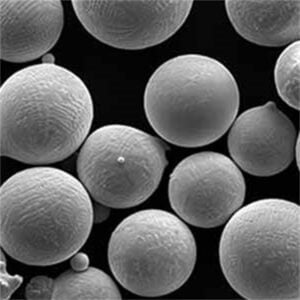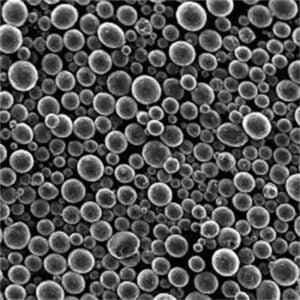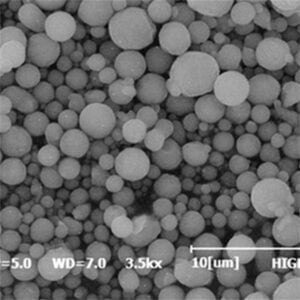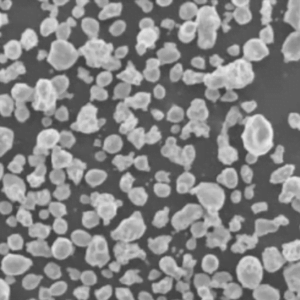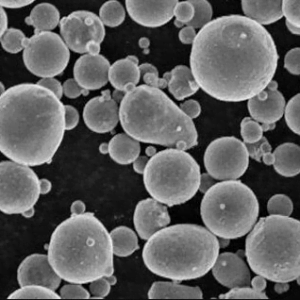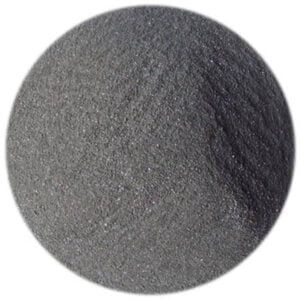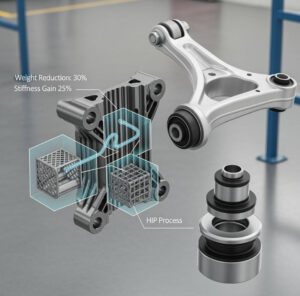Nickel Aluminide Powder
Table of Contents
Overview of nickel aluminide powder
Nickel aluminide powder is an intermetallic compound composed of nickel (Ni) and aluminum (Al) atoms in an approximate ratio of 1:1. It is characterized by high strength and hardness, excellent corrosion and oxidation resistance at high temperatures, low density, and good wear resistance.
Nickel aluminide powders are produced by gas or water atomization of pre-alloyed ingots containing 35-65% nickel and balanced aluminum. The powders have spherical morphology with smooth surface and controlled particle size distribution.
Key properties and applications of nickel aluminide powder:
Composition:
- Nickel: 35-65%
- Aluminum: Balance
Properties:
- High strength and hardness at room and elevated temperatures
- Low density (5.3 – 6.2 g/cc)
- Good corrosion resistance
- Excellent oxidation resistance up to ~1000°C
- Good thermal conductivity and thermal shock resistance
- Low coefficient of thermal expansion
Applications:
- Powder metallurgy – sintered components
- Thermal spray coatings
- Additive manufacturing
Product forms: Gas atomized spherical powder
Particle sizes: 10 – 150 microns
Standards: ASTM B951, UNS N07041, other custom specifications
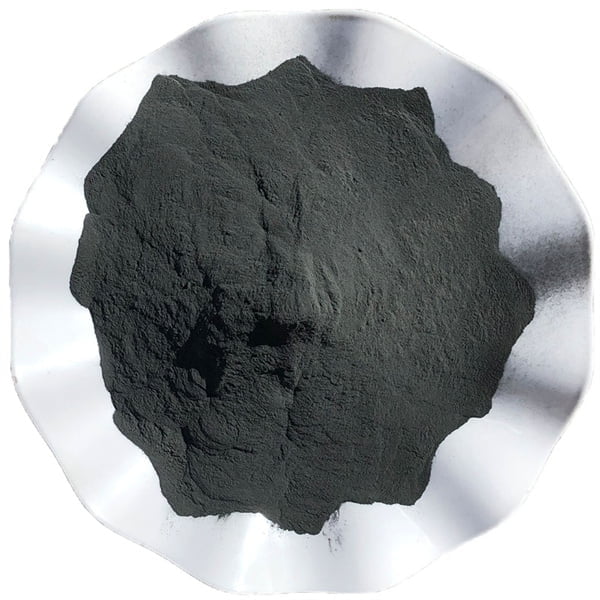
Types of nickel aluminide powder
Nickel aluminide intermetallic compounds exist in several phases with different nickel-aluminum ratios and crystal structures. Common types include:
| Type | Composition | Crystal Structure | Key Properties |
|---|---|---|---|
| NiAl (Stoichiometric) | Nickel 50%, Aluminum 50% | B2 – Cubic | Highest strength and ductility, good oxidation resistance up to 1000°C |
| Ni3Al (Nickel-rich) | Nickel 75%, Aluminum 25% | L12 – Cubic | High hardness and brittleness, lower oxidation resistance |
| NiAl3 (Aluminum-rich) | Nickel 25%, Aluminum 75% | DO22 – Orthorhombic | Lowest strength and hardness, poor oxidation resistance |
Gas atomized pre-alloyed nickel aluminide powders typically have near-equal Ni:Al ratio to form the NiAl B2 phase in the finished component. Deviations from 1:1 composition produce mixed NiAl + Ni3Al or NiAl + NiAl3 microstructures after sintering/consolidation.
Production Process
Nickel aluminide powders are manufactured by inert gas atomization of induction-melted Ni-Al ingots containing 35-65 wt% Ni. The process involves:
- Melting – Ni and Al are induction melted under inert/vacuum atmosphere
- Atomization – High pressure inert gas (N2, Ar) disintegrates the molten stream into fine droplets
- Solidification – Droplets rapidly solidify into spherical powder particles
- Collection – Atomized powder collected in chamber and classified by particle size
Key process parameters:
- Composition control of master alloy critical
- Induction melting under inert atmosphere to minimize oxygen/nitrogen pickup
- Atomization gas pressure and flowrate affects particle size distribution
- Rapid solidification rate produces fine grained microstructure
Properties of nickel aluminide powder
Nickel aluminide powders and consolidated components exhibit a range of unique properties making them suitable for high performance applications:
| Property | NiAl Powder | Sintered NiAl |
|---|---|---|
| Density (g/cc) | 5.3 – 6.2 | 5.8 – 6.5 |
| Melting Point (°C) | 1638 | 1638 |
| Strength (MPa) | 200 – 350 | 500 – 1100 |
| Hardness (HV) | 300 – 500 | 500 – 800 |
| Young’s Modulus (GPa) | 180 – 220 | 160 – 200 |
| Compression Strength (MPa) | 500 – 1500 | 1000 – 2500 |
| Coefficient of Thermal Expansion (10<sup>-6</sup>/K) | 11 – 13 | 11 – 14 |
| Thermal Conductivity (W/m-K) | 20 – 35 | 15 – 30 |
| Electrical Resistivity (μΩ-cm) | 125 – 160 | 60 – 100 |
| Oxidation Resistance | Excellent up to 1000°C | Excellent up to 1000°C |
| Corrosion Resistance | Very Good | Very Good |
The outstanding strength-to-density ratio and high temperature capabilities make these materials attractive alternatives to conventional nickel and cobalt superalloys for aircraft, automotive, space, and energy applications.
Applications of nickel aluminide powder
The unique capabilities of nickel aluminide powders lead to a diverse range of applications across industries:
Powder Metallurgy
- Structural components for aerospace and automotives
- Turbine blades, disks, shafts, cases
- Extreme environment sensors
Thermal Spray Coatings
- Protective coatings for turbine blades and vanes
- Combustion chamber liners
- High temperature oxidation/corrosion resistance
Additive Manufacturing
- Complex geometries not feasible by casting
- Reduced lead times and costs vs machining
- Components for aerospace engines and airframes
Other Applications
- Joining aids, brazements
- Electronic packaging
- Catalysts
Some advantages over competing materials:
| Vs Superalloys | Vs Titanium Alloys | Vs Stainless Steels |
|---|---|---|
| Higher strength-to-weight ratio | Better high temperature strength and creep resistance | Superior oxidation and corrosion resistance at high temperatures |
| Excellent oxidation resistance | Lower density | Higher strength and hardness |
| Lower component costs | Higher service temperature limits | Higher working temperatures |
Nickel aluminide outperforms these conventional alloys in the harshest environments across critical engineering applications.
Specifications of nickel aluminide powder
Gas atomized nickel aluminide powders are available in various standard and custom specifications tailored to end-use requirements:
Compositions
| Alloy | Ni | Al | Other Elements |
|---|---|---|---|
| NiAl | 50% | 50% | – |
| Ni-40Al | 60% | 40% | – |
| Ni-45Al | 55% | 45% | – |
| Ni-35Al-20Cr | 35% | 35% | 20% Cr |
Particle Size Distributions
| Size Range | Typical Uses |
|---|---|
| <20 μm | additive manufacturing, thermal spray |
| 20-63 μm | metal injection molding, spraying |
| 63-150 μm | general powder metallurgy |
Size Specification Standards
- ASTM B214: Standard classification system and size analysis
- DIN 51902: Air jet sieved analysis
- ISO 13318-1: Laser diffraction particle size analysis
Chemical Requirements
- ASTM B951: Base specification for NiAl intermetallic powders
- Other application-specific chemical requirements
Condition Specifications
- ASC PS7: Gas atomized, spherical powders
- Other customized conditions like inert gas atomized, high purity etc.
Suppliers and Pricing of nickel aluminide powder
Some leading global suppliers of nickel aluminide powders include:
| Manufacturer | Brand Names | Production Capacity |
|---|---|---|
| Sandvik | Osprey®, Nypcor® | Medium |
| Carpenter Technology | CarTech® | Small |
| Hoganas | Hoganas NiAl | Medium |
| Praxair | – | Small |
| Atlantic Equipment Engineers | Ferro-Term, Pulvimet | Small |
Pricing
- Cost per kg varies from $50 – $300 based on alloy, powder size, quality
- Small lots under 50 kg much more expensive (~2-5x) than bulk volumes
- Reduced pricing for long term supply contracts
- Economy pricing for lower purity developmental grades
Custom Manufacturing
- Several contract manufacturers provide custom atomization services
- MOQ around 500-1000 kg
- Lead times typically 12-16 weeks
Buying Guide
Key considerations when selecting a nickel aluminide powder supplier:
Technical Factors
- Alloy composition suited for application
- Particle shape and size distribution
- Chemical purity and microstructure
- Lot-to-lot consistency
- Quality certifications
Commercial Factors
- Pricing for powder specifications
- Minimum order quantity
- Lead time for orders
- Long term supply agreements
- Change control process
Supplier Capabilities
- Industry experience and reputation
- Technical expertise and customer service
- Production capacity and scalability
- Customization services
- Inventory management and buffer stock
Buyers must evaluate both product quality and business factors when sourcing nickel aluminide powders for critical programs.
nickel aluminide powder Pros vs Cons
Advantages
- High strength-to-weight ratio
- Excellent high temperature properties
- Good environmental resistance
- Near-net-shape manufacturability
- Favorable cost structure
Disadvantages
- Inferior room temperature ductility/toughness
- Susceptibility to environmental embrittlement
- Complex thermo-mechanical processing
- Control of stoichiometry challenging
- Limited suppliers and high MOQs
For extreme temperature applications, nickel aluminide’s capabilities offset the increased processing complexity and expense.
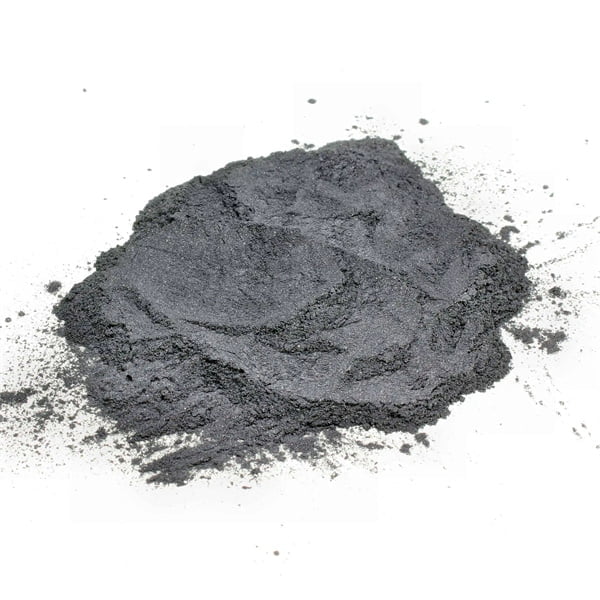
FAQs
Q: What is the chemical formula of nickel aluminide?
A: The stochiometric intermetallic compound has a chemical formula of NiAl. Other nickel-rich and aluminum-rich phases exist with formulas such as Ni3Al and NiAl3.
Q: Is nickel aluminide ferromagnetic?
A: No, unlike pure nickel metal, nickel aluminide has negligible ferromagnetism in its equilibrium microstructure. However, certain non-equilibrium phases formed during processing may exhibit temporary ferromagnetism.
Q: What is the melting point of nickel aluminide?
A: 1638°C is the melting temperature of the equilibrium NiAl phase. The melting point reduces for nickel-rich and aluminum-rich deviations from this composition.
Q: What are common uses of nickel aluminide?
A: Main uses are in structural powder metallurgy parts, additive manufacturing components, thermal spray coatings, catalysts, and electronic packaging. Applications leverage excellent mechanical properties and environmental resistance at high temperatures up to 1000°C.
Q: What industries use nickel aluminide alloys?
A: Aerospace is the largest consumer for aircraft and rocket engine components. Other major industries are power generation, automotive/racing, chemical processing, and oil and gas.
Q: How is nickel aluminide powder made?
A: Gas atomization is the conventional process where the molten NiAl alloy stream is disintegrated by high pressure inert gas jets into fine spherical powder particles that rapidly solidify. Water atomization is also used on a smaller scale.
Q: Why is nickel aluminide not used more widely?
A: Challenges around developing complex thermo-mechanical processing to achieve adequate ductility/toughness and controlling precise stoichiometry have limited more widespread structural adoption. Costs are also higher than competing alloys.
Q: What is the difference between nickel and nickel aluminide?
A: Pure nickel is a metal while nickel aluminide is an intermetallic compound. Nickel is tougher but weaker at high temperatures. Nickel aluminide has excellent elevated temperature strength, hardness and environmental resistance.
Conclusion
With its attractive high temperature capability-to-weight ratio, nickel aluminide enables lighter, higher performing components across demanding applications in aerospace, automotive, energy, and industrial sectors.
Though more costly and challenging to fabricate than traditional alloys, continued research and development is expanding nickel aluminide’s operational envelope – allowing engineers to push limits in next generation engines, airframes, powerplants and processes.
know more 3D printing processes
Additional FAQs about Nickel Aluminide Powder (5)
1) Which nickel aluminide phase is most common for powders and why?
- NiAl (B2) near 50:50 Ni:Al is most common due to balanced oxidation resistance, creep strength, and better processability than Ni3Al or NiAl3. It also maintains a protective Al2O3 scale up to ~1000°C.
2) What powder characteristics matter most for additive manufacturing?
- High sphericity, narrow PSD (e.g., 15–45 μm for PBF-LB; 45–150 μm for DED), low interstitials (O/N/C), low satellite content, and consistent apparent/tap density. Cleanliness from EIGA or vacuum gas atomization helps minimize lack‑of‑fusion and hot cracking.
3) How does oxygen content affect performance?
- Elevated oxygen promotes oxide films and inclusions that reduce ductility and fatigue strength and increase porosity risk in AM or sintering. For critical parts, target O ≤ 500–1000 ppm with vacuum melting/atomization and inert handling.
4) Can Nickel Aluminide Powder be functionally graded with superalloys?
- Yes. DED/laser cladding can build graded transitions (e.g., IN718 → Ni-rich transition → NiAl top layer) to combine structural strength with surface oxidation resistance while reducing thermal mismatch stress.
5) What post‑processing routes improve properties?
- HIP to close pores, followed by tailored heat treatments to stabilize ordered phases; surface finishing (machining/grinding) and application of MCrAlY bond coats or TBCs for extended oxidation life.
2025 Industry Trends for Nickel Aluminide Powder
- Cleaner atomization: EIGA and vacuum gas atomization expand share to reduce O/N and improve AM yield for NiAl/Ni3Al components.
- AM scale-up: More lattice heat exchangers and hot‑section shrouds printed with NiAl skins or graded overlays for oxidation protection.
- Ductility engineering: Minor additions (B, Hf, Zr) and grain‑boundary control improve room‑temperature toughness and fatigue.
- Data‑driven QA: Lot genealogy with O/N/H, PSD, and shape analytics linked to print outcomes; increased adoption of ISO/ASTM 52907 on POs.
- Sustainability focus: Argon recovery and closed‑loop powder reclamation cut CO2e per kg powder; more supplier EPDs.
2025 snapshot: Nickel Aluminide Powder metrics
| Metric | 2023 | 2024 | 2025 YTD | Notes/Sources |
|---|---|---|---|---|
| Typical oxygen in GA/EIGA NiAl (ppm) | 800–1500 | 700–1200 | 500–1000 | LECO O/N/H; cleaner atomization lines |
| PBF-LB achievable relative density (%) | 98.0–99.0 | 98.3–99.2 | 98.5–99.4 | Preheat + scan optimization |
| Cyclic oxidation mass gain at 1000°C, 100 h (mg/cm²) | 0.8–1.2 | 0.7–1.0 | 0.6–0.9 | Improved Al2O3 scale stability |
| Laser cladding dilution on steels (%) | 8–12 | 7–11 | 6–10 | Process tuning, multi-pass |
| Spherical NiAl price (USD/kg) | 70–110 | 70–105 | 65–100 | Volume buys, more suppliers |
| Plants with Ar recovery (%) | 30–40 | 35–45 | 40–50 | ESG/EPD reporting |
References: ISO/ASTM 52907 (feedstock), ASTM B951 (Ni aluminide powders), ASTM E1019/E1409 (O/N/H), ISO 13320/ASTM B822 (PSD), ASM Handbook (Powder Metallurgy), peer‑reviewed oxidation/AM studies: https://www.astm.org, https://www.iso.org
Latest Research Cases
Case Study 1: Graded NiAl Overlay on IN718 via DED for Hot‑Section Life (2025)
Background: Energy OEM needed improved oxidation resistance on IN718 vanes operating near 980–1000°C.
Solution: Deposited functionally graded build (IN718 → Ni‑rich transition → NiAl cap) using EIGA NiAl powder; controlled interpass temperature and dilution (<8%); post‑HIP and aging.
Results: Cyclic oxidation mass gain reduced 35% vs bare IN718; TBC spallation life +28%; no interfacial cracking after 500 cycles; maintenance interval extended by ~1,000 h.
Case Study 2: Low‑Oxygen Ni3Al Powder for PBF‑LB Lattice Cores (2024)
Background: Aerospace R&D sought lightweight, oxidation‑resistant lattice heat exchangers with better RT ductility.
Solution: EIGA Ni3Al microalloyed with B+Zr (O ≈ 420 ppm), 350–450°C preheat, island scanning; stress relief + HIP.
Results: Relative density 99.2%; RT elongation 2.8% (up from 1.2% baseline); 900°C oxidation rate −18%; lattice crush strength +15% at 800°C.
Expert Opinions
- Prof. Tresa M. Pollock, UC Santa Barbara, Distinguished Professor
Key viewpoint: “Grain‑boundary chemistry and powder cleanliness are decisive—minor B/Hf/Zr additions only pay off when interstitials are tightly controlled.” - Dr. Matthias Markl, Head of AM Process & Simulation, Fraunhofer IAPT
Key viewpoint: “Functionally graded transitions from Ni superalloys to NiAl are now practical with DED, mitigating thermal mismatch and cracking.” - Dr. Amit Bandyopadhyay, Regents Professor, Washington State University
Key viewpoint: “With preheat and scan strategy optimization, nickel aluminides can be additively manufactured with near‑full density and reliable properties.”
Citations: ASM Handbook; Fraunhofer IAPT technical communications; peer‑reviewed AM and oxidation literature; standards bodies: https://www.astm.org, https://www.iso.org
Practical Tools and Resources
- Standards and QA:
- ASTM B951 (Ni aluminide powders), ISO/ASTM 52907 (feedstock requirements), ASTM E1019/E1409 (O/N/H), ISO 13320/ASTM B822 (PSD), ASTM B212/B527 (apparent/tap density)
- Process guidance:
- AM parameter notes for intermetallics (preheat, scan strategies), DED dilution control, oxidation testing protocols (thermogravimetry, cyclic tests)
- Modeling and design:
- CALPHAD databases for Ni‑Al phase/oxidation prediction; topology/lattice design tools (nTopology, 3‑matic); build simulation for distortion
- Supplier selection checklist:
- Require CoA with PSD (D10/D50/D90), shape (DIA), O/N/C ppm, flow/tap density, lot genealogy; request EPDs and argon recovery details
- HSE:
- Powder handling SOPs for nickel compounds; combustible metal dust standards; vacuum furnace off‑gas management best practices
Notes on reliability and sourcing: Specify alloy (NiAl vs Ni3Al), microalloy additions, PSD windows, morphology, and interstitial limits on POs. Qualify each lot with coupons (density, microstructure, oxidation). Use inert, low‑humidity storage and track reuse cycles. For AM/DED, employ preheat and graded transitions to mitigate cracking and ensure stable properties.
Last updated: 2025-10-15
Changelog: Added 5 targeted FAQs, a 2025 trends/data table, two concise case studies, expert viewpoints, and practical standards/resources tailored to Nickel Aluminide Powder for AM, DED, and coatings
Next review date & triggers: 2026-02-15 or earlier if ASTM/ISO standards update for intermetallic powders, major suppliers release new low‑interstitial NiAl/Ni3Al powders, or new oxidation/fatigue datasets alter recommended specs
Share On
MET3DP Technology Co., LTD is a leading provider of additive manufacturing solutions headquartered in Qingdao, China. Our company specializes in 3D printing equipment and high-performance metal powders for industrial applications.
Inquiry to get best price and customized Solution for your business!
Related Articles
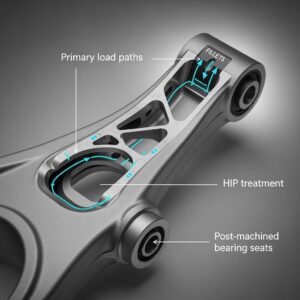
Metal 3D Printing for U.S. Automotive Lightweight Structural Brackets and Suspension Components
Read More »About Met3DP
Recent Update
Our Product
CONTACT US
Any questions? Send us message now! We’ll serve your request with a whole team after receiving your message.







